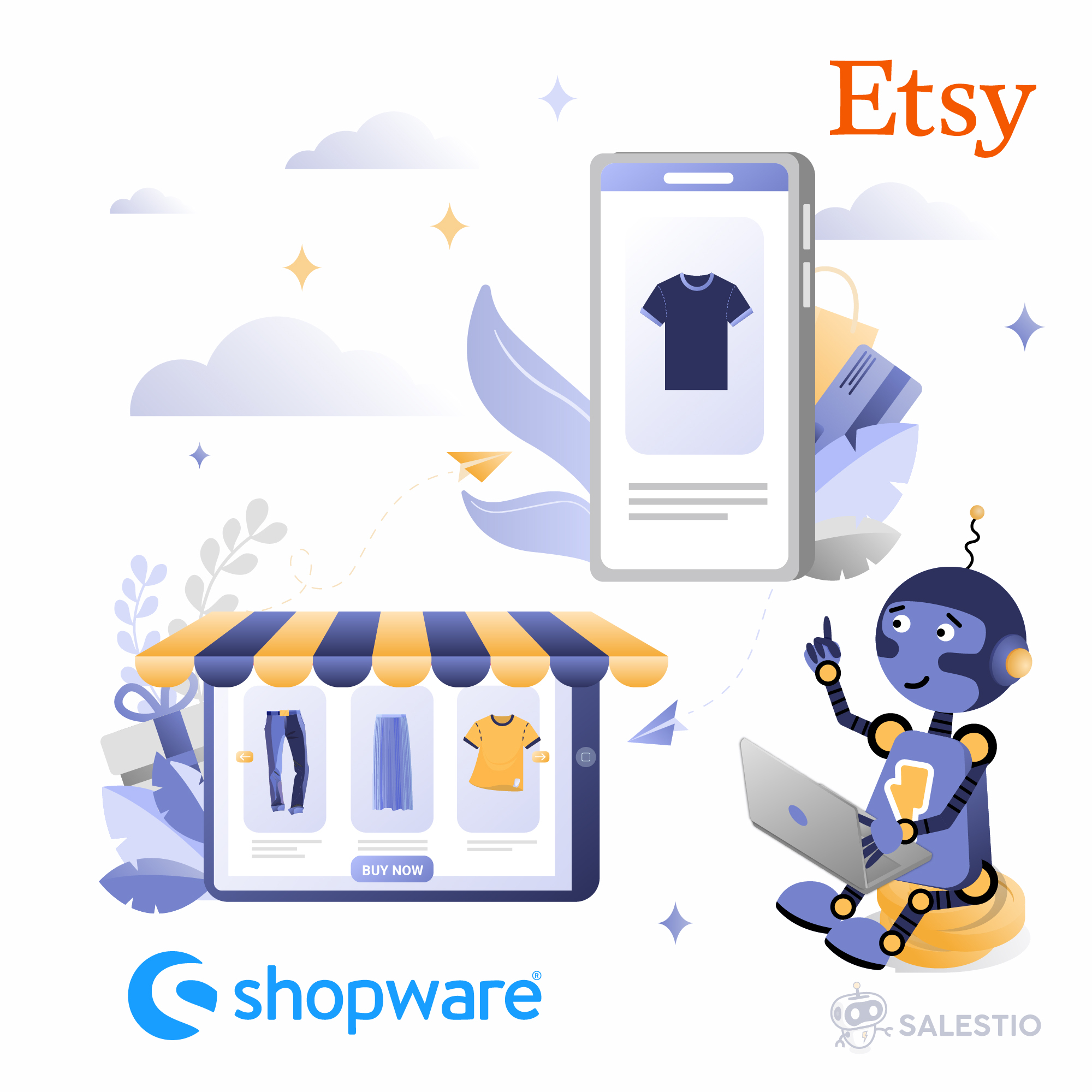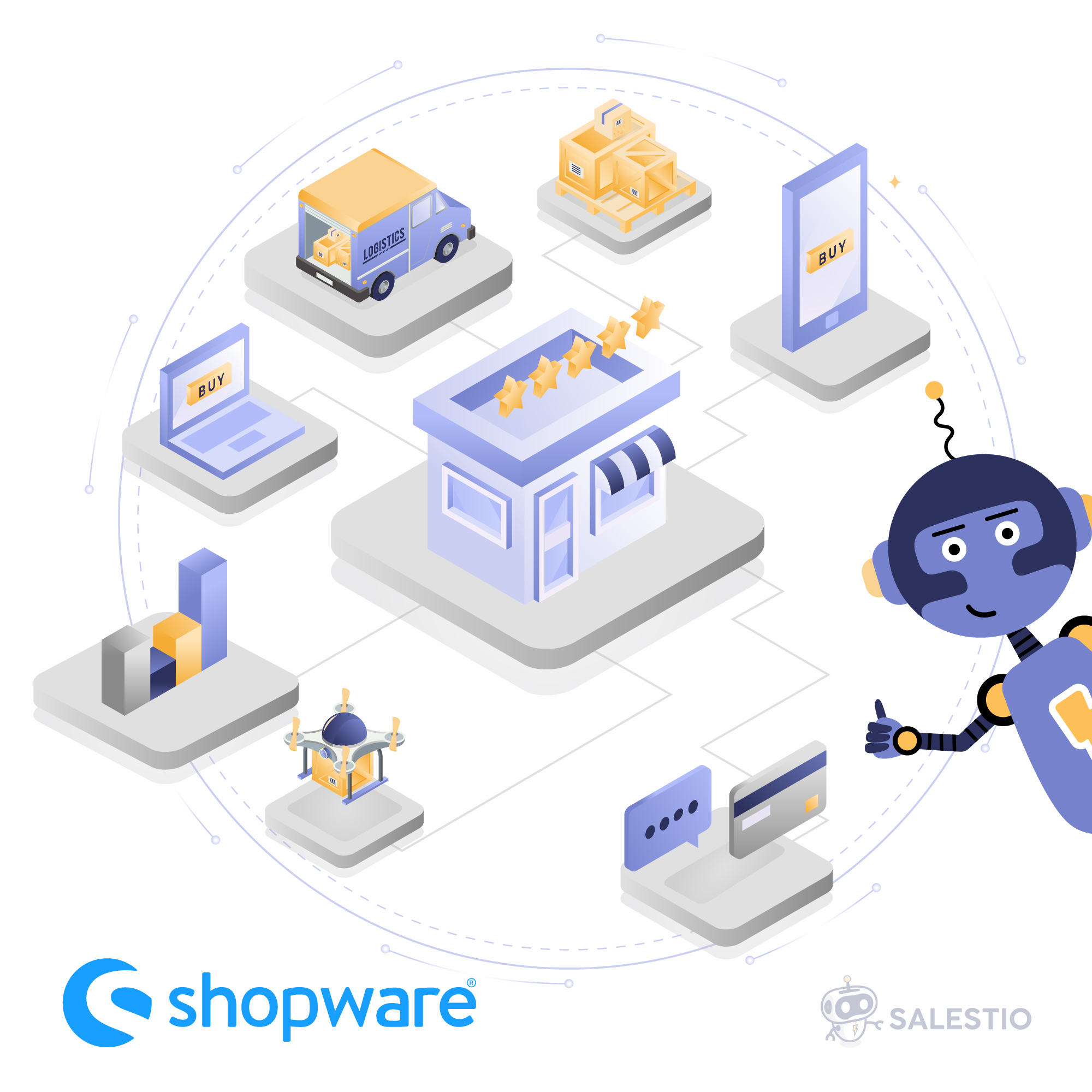02 Feb'24

Shopify offers a variety of fields to fill in product data. When there are not enough standard fields, you can create your own. Shopify calls them metafields. Today we explore what metafields are and how they can be useful for expanding your listings when managing a multichannel store.
You can use metafields internally to track inventory and speed up how the items can be searched. Metafields can also be used for analytical purposes. A more popular application is to hold product data that Shopify does not support out of the box and present it to customers. For instance, a bicycle shop might want to list the number of gears or specify brands for the parts of a complete product.
Adding a metafield definition
Metafield definition is required to set a data type and structure. This will ensure that every time someone enters data into this metafield, it will stick to the same format. After a definition is added, a new field will appear on a Shopify product.
To add one, head to Shopify Settings > Custom data > Metafields > Products. Click “Add definition” at the top of the page.

Some things are required when creating a definition:
- Name: set any title that helps remember this field
- Namespace and Key: set automatically after entering a Name. This one has to be unique in the store.
- Type: select what kind of data the metafield should hold. Integers for barcodes, text for indicating a product line, etc.
Optionally, you can set up data validation below. Configuring validation will help make fewer mistakes in the future when adding values to metafields on the product page.

After a definition is added, you can go to any product page and add the desired data there. In a basic Shopify subscription, only 20 pinned metafields with a definition are shown on the product page. If you don’t see your definition here, make sure that it is pinned in Settings > Custom data. You can also scroll down and click to display all of the available metafields on a separate page.

Metafields without a definition
You may have a few apps in your Shopify store already, and some of them need their own service fields to function properly. Quite often these fields do not have a definition and may be hidden. In some cases, metafields can be moved to the “Without a definition” after a Shopify update. You can check all of such fields in Shopify Settings > Custom data > Metafields > Products > Metafields without a definition. It is also possible to create a definition for any of those fields here:

Metafields without definition in Salestio
To make looking for useful metafields easier, Salestio does not display metafields without a definition by default. If you want to make use of all store metafields, make sure to open your Salestio > Settings tab and enable “Show metafields without a definition”:

After enabling this option, Salestio needs some time to download the missing metafields. To speed up the process, trigger the metafield update in Salestio > Settings:

Take full advantage of metafields with Salestio
When sending product information from Shopify to other marketplaces like Amazon, eBay, or Etsy, you can use metafields to add extra details to your listings. When a metafield is selected, each product will be listed with its specific data from that metafield.
To use a metafield in item specifics, select them during the Creation Profile configuration. Select the marketplace category and product type and move on to adding item specifics. Any item specific can be assigned from a metafield: click one and select a definition from the list.

After making changes, save your Creation Profile. If the product was listed, make sure to Update/Revise it to send the new data. If the item is waiting to be listed, send it to the marketplace.
To learn more about listing new items on different marketplaces, check out our respective guides: Amazon, eBay, and Etsy.
Try Salestio
Salestio makes managing multiple stores easier. If you have a running Shopify store, the app makes it easy to expand to Amazon, eBay, and Etsy. See how it works for your store with a free 30-day trial: Shopify App Store





